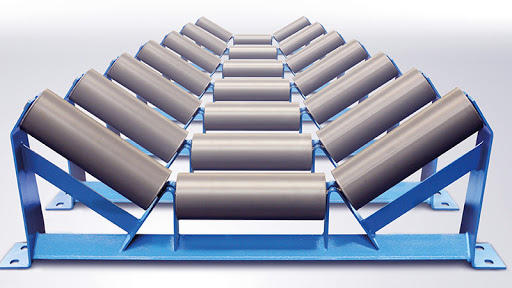Assessing the Purpose and Proper Selection of Conveyor Roller

Minimizing manual labour and automating operations have become top goals of the organization. With the help of this approach, attaining the desirable outcome is turning out to be the simplest task. In fact, material handling is one of the crucial activities where the scope of errors has to be eliminated to achieve perfection. On the other hand, the use of conveyor roller is being preferred by most of the companies in order to make activities resourceful. Basically, the conveyor system is the equipment which makes transportation of goods easier, better and efficient. The mechanism of each conveyor roller is influenced by its weight and size. Besides, the role and function of every conveyor system is variable due to different innovations incorporated in their design.
Let us understand various attributes of conveyor roller
Designed for heavy duty activities, the conveyor roller enables the individuals to life heavy articles. It is the powerful motor accompanied by strong belt components which make conveying of heavier objects easier with this conveyor system. A screw conveyor has capacity to use gravity driven composition or belt driven mechanism depending on their design.
The sleeves of rollers are often made up of PVC, galvanized steel or plastic based on their utility. Theroller which use plastic and PVC in its construction is used to move large objects yet lighter in weight. On the other hand, galvanized steel is efficient in rolling tons of materials.
Also Read : Benefits of Conveyor Roller System and their advanced utility
Moreover, there are two types of conveyor systems, namely, load-bearing roller and lower conveyor roller. In the former one, the weight of the goods placed on the conveyor is supported further making it easier to move objects with ease. In the return roller, the pointed rings at the centre and the flat rings at the bottom make the return of the objects smoother in order to make loading continuous. The maintenance cost of conveyor system is reduced due to the automatic cleaning of the conveyor belt. It should be also added that rollers for conveying are designed to cater to specific purposes so that material handling operations get simpler and better.
Benefits of conveyor rollers
- Customizable manufacture and design
- Easy maintenance and operation
- Beneficial for commercial uses
- Flexible and adaptable
- Simple, fast and reliable mechanism
- Less power to operate
- Carbon footprint of industry are reduced
4 Types of conveyor roller
1. High Speed Rollers
With low noise, this conveyor roller ensures less wear and tear of the whole system during operations. In fact, it is backed by extended life for long-lasting conveying activities. Apart from this, this conveyor roller is precision-powered intended at utilization of bearing caps and crimped tube ends. Furthermore, sprockets and grooves are included in the composition of the conveyor system for proper functioning of chain-driven rollers and fixed shafts.
2. Grooved Rollers
These rollers are based on driving mechanism to convey products without any hindrance. In addition, they have capability to locate grooves at any point of the conveyor roller with spring loaded on both the ends of the conveyor system. They constitute galvanized steel tube and possess crimped ends for the protection of bearing. The topmost reason to consider grooved roller is its easy installation and a long bearing life. The best part about this conveyor roller is that it can withstand heavy loads and has a corrosion resistant tube for smooth as well as durable functioning.
3. Gravity rollers
As compared to the high speed conveyor rollers, the gravity conveyor roller is a cost-effective option. Most of all, with the composition of commercial grade bearing, this roller required low speed to operate. If the work setup does not have any problem with the sound in the application of the gravity roller, then, it is a perfection option to choose. These rollers can adapt to the composition of any conveyor system.
4. Additional options of conveyor roller
Corrosion resistant rollers and chain driven rollers are other alternatives which can be considered when it comes to conveying materials from one place to another. In the corrosion resistant rollers, the light-weight steel tubes are utilized in their structure and they can transport heavy loads. However, the chain driven conveyor roller has sprockets which are welded around them to formulate a proper roller tube. This roller has high speed capacity and can comply with the regulations of heavy load requirements. It is easy to install and operate for making warehouse or other commercial options easier.
How to choose the best conveyor?
Without any second thought, one should look at the loading conditions, types of activities being carried out and the capacity which need to be executed through the conveyor roller. These attributes will enable the organization to choose the best conveyor roller system. The next aspect is extended life of the conveyor system along with the assistance of installing the equipment. It is obvious that installation of conveyor roller system cannot be managed by the in-house professionals. Therefore, hiring the technical expert appointed by the conveyor manufacturer should be counted on to make complicated process of installing the equipment easier.
Conclusion
On a whole, it is ideal to select the suitable conveyor roller equipment after ascertaining its overall functioning and purpose.



